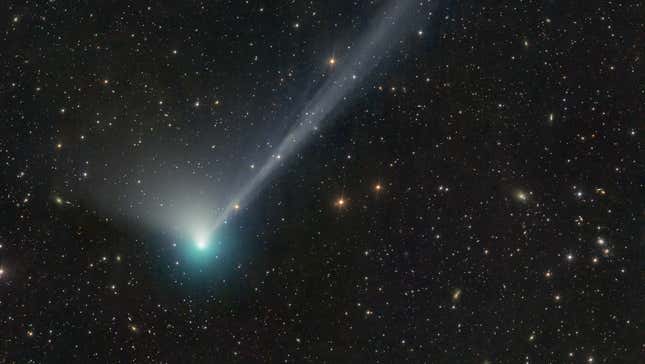
Get excited, space enthusiasts. A long-period comet discovered in March 2022 has recently brightened in the night sky, just in time for its closest approach to Earth in a few weeks. Once it passes us by, it won’t return again for tens of thousands of years.
The comet is named C/2022 E3 (ZTF), a name derived from when and how it was first observed (by a camera at the Zwicky Transient Facility). It is still too dim to see without a telescope, according to NASA. But that may change as the amalgam of ice, rock, and dust whips through our cosmic backyard.
The comet was spotted in March, when it was within Jupiter’s orbit. E3 will make its closest approach to the Sun on January 12 and will be nearest to Earth on February 1 or 2. People in the Northern Hemisphere could be able to view it starting in late January, and it will become visible in the Southern Hemisphere in early February, NASA stated.
C/2022 E3 (ZTF) is a long-period comet, a label applied to comets with orbital periods longer than 200 years. But this particular comet has an extraordinarily long orbital period: It takes the object tens of thousands of years to complete one orbit around the Sun.
According to the British Astronomical Association, the comet “has recently grown a long and highly structured ion tail.” The association also points out that the comet may best be observed in the next couple of weeks, as the Moon will not be as bright in the night sky.
Jessica Lee, an astronomer with the Royal Observatory Greenwich, told Newsweek that the comet may not return to Earth for another 50,000 years, due to its long orbit. “Some predictions suggest that the orbit of this comet is so eccentric it’s no longer in an orbit—so it’s not going to return at all and will just keep going,” Lee said.
But if the comet does return, it would be sometime around the year 52,023. In other words, way too late for you and me.
C/2022 E3 is not expected to be as dazzling as the comet NEOWISE, which was visible to the naked eye when it passed over Earth in July 2020. The surface of that 3-mile-wide comet was warmed by the Sun, causing NEOWISE to shed gas and dusty material in a wonderful tail. It was the brightest comet seen in the Northern Hemisphere since the Hale-Bopp comet in 1997.
NEOWISE won’t return to Earth’s neighborhood for another 6,800 years (or now, 6,798 years, if we’re expecting remarkable punctuality from the comet.) So try tuning in for C/2022 E3—we may be the only humans to ever witness it.
More: Mega Comet Arriving From the Oort Cloud Is 85 Miles Wide